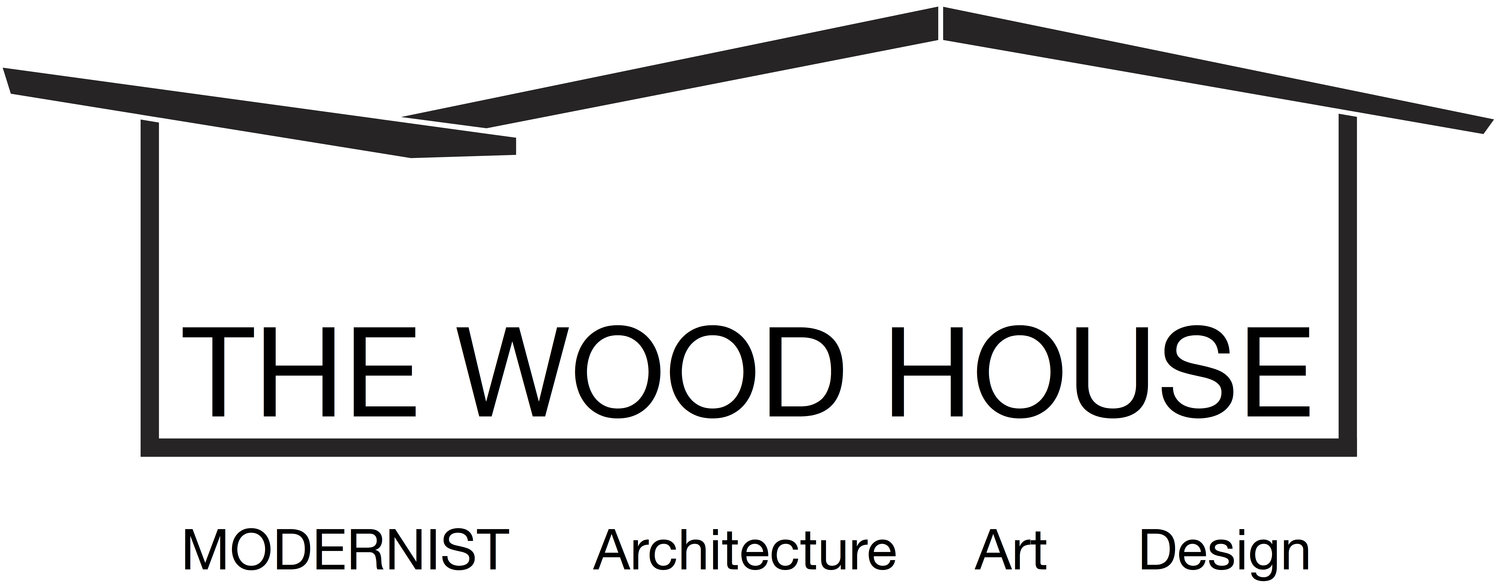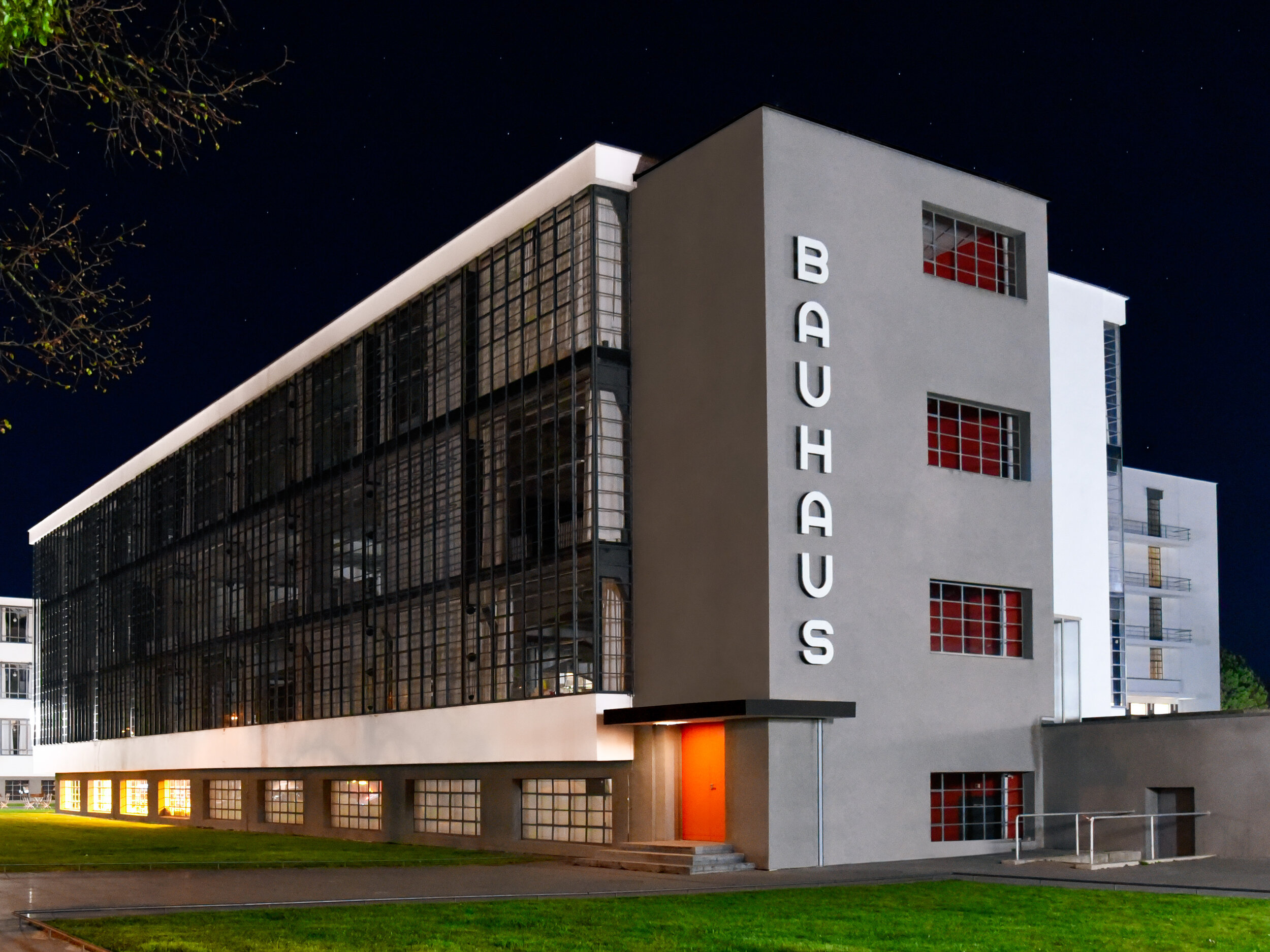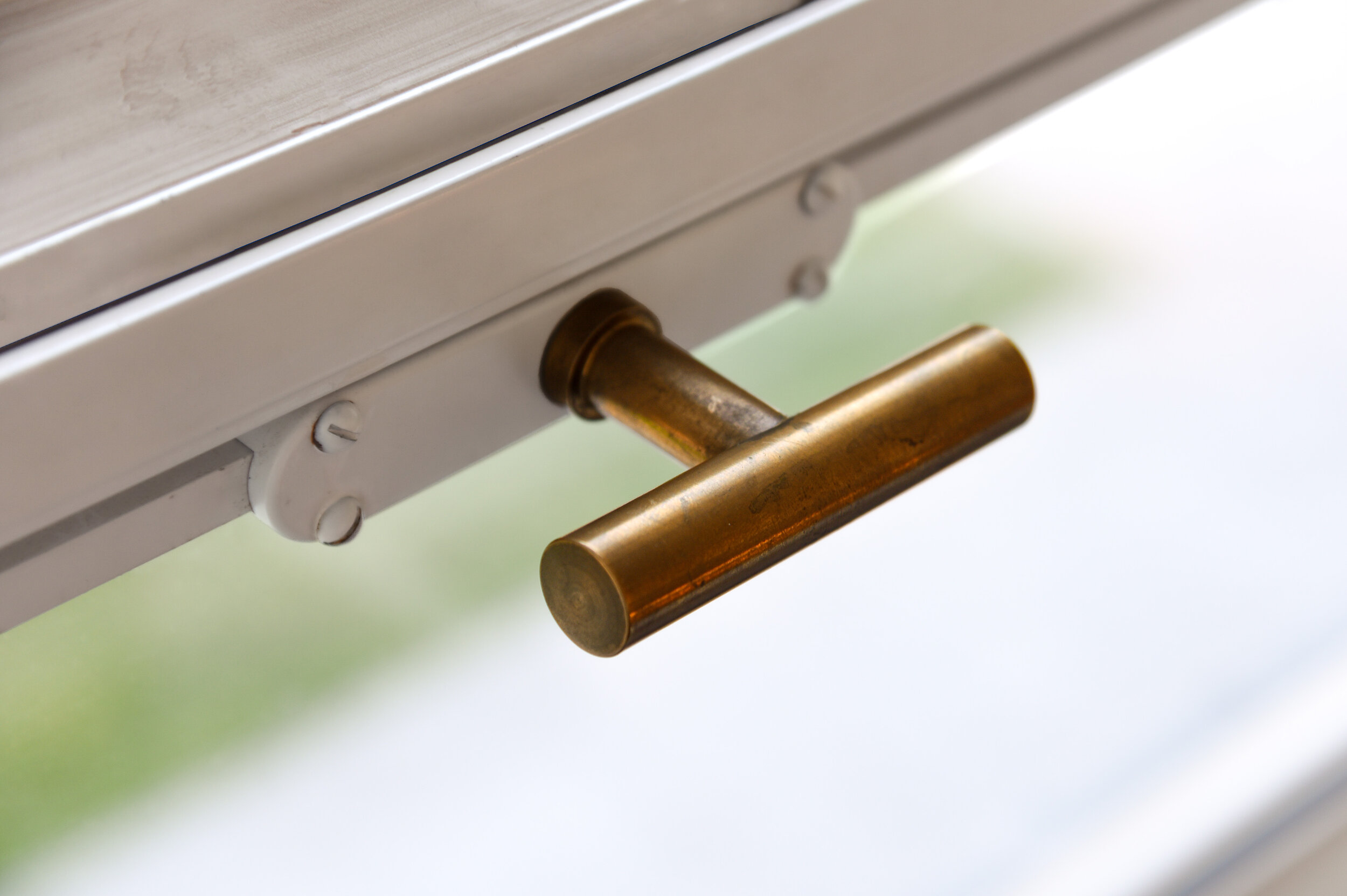Bauhaus Building Dessau
/BAUHAUS BUILDING DESSAU
The Bauhaus Building in Dessau, Germany is considered to be one of the most significant manifestations of modern architecture in the world. The building is a celebrated icon of International Modernism and was listed as a UNESCO World Heritage Site in 1996. Today it is also home to the Bauhaus Dessau Foundation. I’m positive that you do not need me to tell you that 2019 marked 100 years since architect Walter Gropius founded the Bauhaus; the most influential school of art and design in the twentieth century. I am going to go out on a limb here and say that visiting this place is every modernist’s dream. I can assure you that this building has been on our travel list for a very long time. What could possibly be better than seeing this architectural wonder up close and personal? I can answer that. THE dream trip… I mean the big ask. Weimar, Dessau, and Berlin…in 2019. That’s correct. The very year that the Bauhaus would celebrate its centenary – I wanted to be right there, and there and there.
We always carefully plan our travel. Ok – he. He does all of the planning for our travel, which is why I refer to this trip as “the big ask.” I ask, he processes the request and delivers. To work out the logistics for these very special places at this very special time required a great amount of organization and an even greater amount of persistence. In this case that persistence really paid off. He managed to secure an overnight stay at the Bauhaus Studio Building in Dessau, the night before it was scheduled to re-open. You see, the building was being freshly renovated for their “100 jahre bauhaus” celebration. Because of this, and through sheer happenstance, we had the Bauhaus Building just about to ourselves. You know those times; they are few and far between. Extraordinary moments that hit you in the gut and say: “enjoy every last second, take in as much as you can because you will never experience anything like this ever again.” This was definitively one of those times. I am thinking that if you have found yourself here reading this, you already know the Bauhaus is a vast topic. Countless explanations, essays, books and films can be found on the subject or subjects that fall quite rightly under the Bauhaus umbrella. Many wonderfully done by individuals much more qualified than I. Full-bore coverage for which I am thankful. That affords me the ability to share with you a very personal and magical experience: to live like a Bauhausler, if only for one night..
Gropius Bauhaus architecture view; iconic lettered facade to studio building opposite end.
“You have to walk right round the whole building in order to appreciate its corporeality and the function of its members.” - Walter Gropius
It could have been the time we arrived. It was later than expected. We made a stop on the way up from Weimar. We thought it would be familiar; a place we have never physically been but knew well through the multitudes of photos and books we have poured over so many times. Maybe it was the stark white render against the backdrop of a dark starry sky or the prominence of the world-renowned glass curtain wall. We felt small in proximity. We were awe-struck and excited. Like the first day of school excited, except we were the only ones around that night. Feeling like we went back in time somehow, we raced around and quickly began pointing out all of the things we knew about the building, then began to see all of the things one cannot possibly glean from a photograph. For one, we already knew the most arresting architectural feature of the building would be Walter Gropius’ glass curtain wall facade. It is one thing to see it in books, quite another to experience its three stories of glass running the entire length of the building without interruption. Even more outstanding was the way the glass seamlessly wrapped around the corners allowing you to see right through two sides of the building at once. We explored the Bauhaus grounds until we were about ready to drop; as I said earlier, nights like this can only happen once in a lifetime. We found a terrific vantage point, which allowed us to scan the whole of the building in one shot. From the iconic BAUHAUS lettered facade, past the glass facade of the workshop wing, the technical studies wing, and the Bridge to The Studio Building anchoring the end opposite. The Studio Building was where we would be laying our heads that night, but not before stepping out on to our studio’s balcony. Pictured above, a rare sight lighting up both the yellow ceiling and my night. A very recognizable Bauhaus sphere. This particular one an actual original made by Marianne Brandt in the Bauhaus workshops while she attended the school. She was a force, an absolute wonder woman, and one of my favourite Bauhauslers. More on her later.
Bauhaus Studio BuildinG or Prellerhaus; larger communal balconies. east facade.
Under a blanket of stars, drunk off the atmosphere we slowly made our way to the Studio Building. Walking the grounds and slipping in and out of the buildings of the Bauhaus made us feel or at least better imagine what life might have been like for the students who lived here. The place where modernism had its start and spread the world over. It is astounding to think that it was 100 years ago.
The Bauhauslers called the residence building the Prellerhaus, named after their previous accommodation in Weimar. The name is still used today. With five stories it is the tallest of the buildings on the grounds and has its own entrance. The Prellerhaus opened in 1926 and was the first student living quarters in Germany to be integrated within a school. Mr. Gropius wanted to introduce students of the Bauhaus to a modern way of communal living in this specially designed residence building. Some facts about the Prellerhaus. Come on now, you must have realized some have already made their way into the story? I cannot help myself - I love facts. But that is not the only reason. Another is that you can experience some of this once again thanks to the Bauhaus Dessau Foundation, so listen up! There are 4 residence floors with 7 live in studios per floor. Each floor has a shared kitchenette at the end of the corridor which grants you access to the larger communal balconies you see pictured above. There are also shared bathrooms and shower rooms – we will definitely come back around to that later. There are 28 rooms, 16 of which have their own balcony… Right, fact time is up. Facts will surely resume with the “Following Day at the Bauhaus Dessau” story (working title)
Balcony, that’s the word to put me back on track. So, we were on the way to our studio room when I looked up and saw, with my own two, what I think to be the very best part of this building. Those iconic Prellerhaus balconies jutting out of the facade like springboards! (I am holding onto my favourite photo of this facade for the daytime installment as the shadow and light play so well with the angles.) I couldn’t believe my eyes, it was almost surreal. I am a huge fan of Bauhaus photography. The wonderfully out of this world, how-can-anyone-get-anything-done-whilst-having-such-fun photos, taken of and by Bauhaus students and faculty. I imagined the scenes that played out here on these small platform balconies. It was mind boggling that we were actually here. We stood outside for another minute wondering who may have occupied these studios in the 20’s. It is said that ‘Marianne Brandt, Marcel Breuer, and Alfred Arndt occupied neighboring flats.’ This statement is hard for me to comprehend. The Bauhaus school fostered so much genius and creativity, my head was spinning.
Something of importance to note briefly here, but will surely be discussed in future accounts of our Bauhaus trip is the importance of restoration and preservation. The tireless efforts of The Bauhaus Dessau Foundation to restore and preserve these buildings has ensured that today, they are as close to original as possible. This allows visitors to understand and experience these special places as they actually were. The photo of the door handle on the grey interior door is original to the building; designed by Walter Gropius and made in the Bauhaus workshops. In fact, all of the original fits and fittings were designed and made in the workshops of the school. There are a few of these rare historical gems preserved in the Dessau Bauhaus buildings. Any reproductions were carefully manufactured to exacting detail. You might notice the historically correct Bauhaus colors here on the stair railings and in the corridors. Upon entry into the Prellerhaus, we were taken with the use of color to highlight the architectural structure of the space. This was the work of Bauhaus Junior Master Hinnerk Scheper who believed in emphasizing form with color. Each floor of the Studio Building was differentiated by ceiling color. The concrete stairs painted a rich black only on the sides combined with their geometry, forced our eyes towards them and made us want to continue upwards.
Shadow and light. In the Bauhaus buildings, shadow lines look perfectly drawn, sharp in contrast to the warm glow of the evening sun against the walls. If you know anything at all about me, you know that I am showing great restraint at the moment, sharing only a few of these photos. We quite literally have hundreds of them. It’s a beauty I am not able to resist, even at home in the Wood House. On those extra special sunlit days, I always find myself asking “where did the day go?” It went to me chasing light is where it went. The realization that we may have just spent hours in the stairwell did not surprise me at all. I’ve been here before, chasing the light that is. Add this to the details I mentioned prior, we probably could have stayed a lot longer; but we hadn’t even opened the door to our corridor yet – in case you are interested, our floor had a blue ceiling…
Upon entering the room, we weren’t quite sure what to expect, as we knew throughout the years the studio rooms went through many different iterations and alterations. The Studio Building and its communal areas have been restored to strict specifications but the renovations in the rooms, we were told, have been to allow visitors to stay comfortably in a landmarked building. The original interior objects designed and made by Marcel Breuer and his students in the furniture workshop of the Bauhaus School cannot be found in these rooms. They are on display in museums and galleries the world over. What I can tell you is the recreation of a spartanly furnished studio, together with that infamous balcony, still made us feel quite like Bauhauslers. There was a small washing up sink, and a desk for writing. The white door leading out to our balcony, we are pretty sure, had the original Bauhaus handle. The metal framed window you see above with the brass handle was quite heavy, but the mechanism was the definition of German engineering. The push button light switches were perfect reproductions and a detail I liked, maybe because we do not have them here in the states. Before we settled in for a good night’s sleep in what we found to be a very cozy bed, we stepped outside. It was late and the sky was filled with stars. We could see the moon overhead. Once again I found myself quietly thinking about all of the photographs taken out on these balconies. Documentation of another time much different from this. I thought about all the smiling faces and comradery the students must have felt in creating something new, and though they may not have known it, everlasting. In that moment, I wished I could have been there during that time.
Our room faced northeast and we woke up with the sun. We had a big day ahead; this time a scheduled tour of the Bauhaus building as well as visits to the other Bauhaus architecture in Dessau. Since we woke early and had a little extra time, I strolled down our hallway to peek at the small kitchenette at the end of the corridor. Niall got up to take a shower a bit apprehensive about the “shared shower situation,” but came back singing its praises. He returned with the following report. The room consisted of an innovative self-contained box comprised of two individual shower stalls. Each was a wet room with space to hang one’s clothes and store personal belongings. A sink was integrated into the outside of the box. A very modern solution to provide practical amenities to overnight guests. The genius of this solution: no impact to the room’s original structure in keeping with UNESCO guidelines. Outside of the “modern shower box” the room had only one bench; a Marcel Breuer design manufactured by Thonet, three squared lights and one incredible view of the Bauhaus Bridge.
Architect Walter Gropius’ glass curtain facade at the bauhaus building dessau, gleaming as the bauhaus school marks 100 years.
“So much for technique! - But what about beauty? The New Architecture throws open its walls like curtains to admit a plentitude of fresh air, daylight and sunshine.”
- Walter Gropius
By the time we reached Dessau we were about a week into our Bauhaus adventure in Germany, having visited sites and exhibitions in both Weimar and Berlin. We saw and learned so much in the days leading up to and the days following this unforgettable night. I will continue to write about it all, there is so much more to share. This trip has left a profound imprint.







































